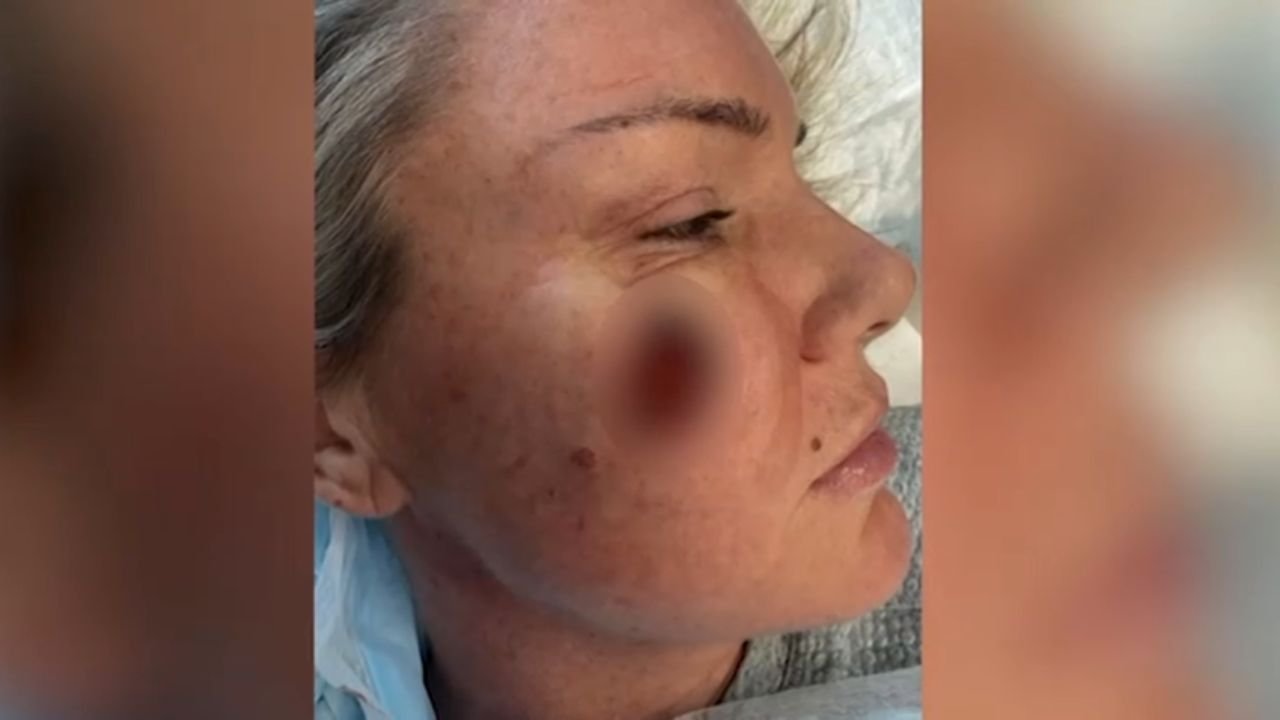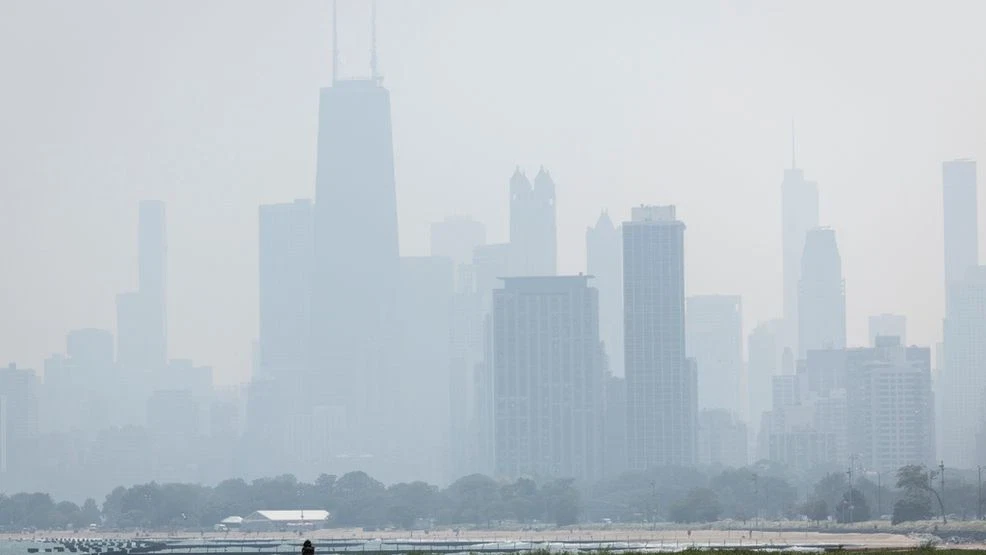CHICAGO — What started as a routine dermatologist visit turned into a terrifying journey for 43-year-old Mika Stambaugh, a Chicago woman who discovered she had melanoma skin cancer after her doctor noticed a suspicious spot on her face — one that would ultimately leave her with a visible scar and a renewed mission to educate others.
“He walked in the room and within one minute said, ‘What’s that on your face?’” Mika recalled. “I said, ‘I don’t know. That’s what I’m here for.’ And he goes, ‘I’m pretty sure that’s melanoma.’”
Years of Tanning, No Sunscreen — A Dangerous Combo
Mika’s diagnosis came after 30+ years of tanning without sunscreen, something she now views as a huge risk factor she ignored. She loved being tan and always sought that “glow” — but was unaware of the long-term dangers.
Doctors at Northwestern Medicine confirmed it was early-stage melanoma, a potentially fatal form of skin cancer if left untreated.
Months of Surgeries and Healing
After the initial biopsy, Mika underwent multiple procedures to remove cancerous tissue, leaving a large, gaping hole in her face. The wound was eventually closed with stitches more than a week later. Though the physical scar remains, she considers it a reminder of survival — and a public teaching tool.
“I look in the mirror, and I’m just grateful I don’t have cancer,” she said. “This is my journey now.”
Doctors Warn: Early Detection Is Key
Dr. Murad Alam, a dermatologist at Northwestern, emphasized the importance of catching skin cancer early. Fair-skinned individuals, people with significant sunburns in childhood, and those with a family history are at greater risk.
“Even one blistering sunburn in childhood can lead to melanoma decades later,” Dr. Alam explained.
Doctors recommend using broad-spectrum sunscreen with SPF 30+, wearing protective clothing, and avoiding indoor tanning.
Know the Signs: What to Look For
Experts encourage everyone to remember the ABCDE rule when monitoring moles and skin changes:
-
Asymmetry: one half doesn’t match the other
-
Border: irregular or notched edges
-
Color: varied shades or unusual colors
-
Diameter: larger than 6mm (pencil eraser)
-
Evolving: changes in shape, size, or feel
In addition to melanomas, the most common skin cancers — basal cell and squamous cell carcinoma — can also be deadly if ignored.
Insurance Covers Yearly Skin Exams in Illinois
Thanks to an Illinois law passed in 2020, most commercial health plans are required to cover one full-body skin check per year at no cost to the patient — no deductible, co-pay, or coinsurance.
Dr. Amy Derick of Derick Dermatology recommends all adults consult with a dermatologist to assess their individual skin cancer risks.
Mika’s Mission: Awareness and Advocacy
Mika has since partnered with the Melanoma Research Foundation and State Rep. LaShawn Ford to launch “Mika’s Melanoma Monday,” observed on the first Monday of May during Skin Cancer Awareness Month. The campaign urges people to schedule annual skin checks and adopt sun safety habits.
“It’s about preventing this from happening to others,” she said.
Do You Get Regular Skin Checks?
If Mika’s story made you reconsider your sun habits or reminded you to book a dermatologist appointment — tell us your thoughts on ChicagoSuburbanFamily.com.












